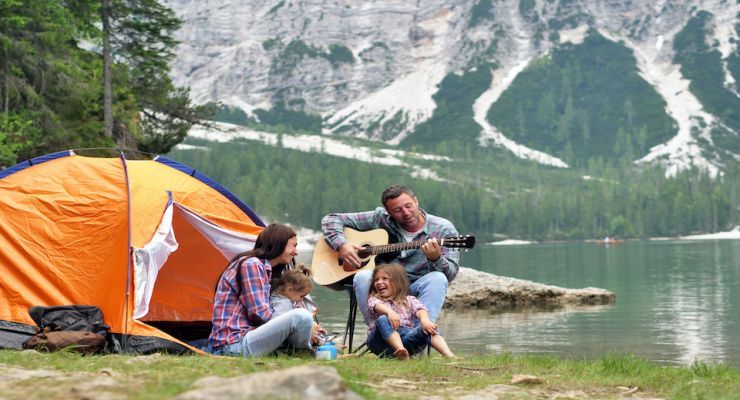There’s nothing like a midsummer camping trip to help connect you to nature and give you a chance to unwind and destress. However, many people fail to realize the impact that their presence has on nature and are not conscious of the pollution they can create. Whether you choose to go deep into the woods or stay at a more established campsite, there are a few ways that you can reduce your environmental impact and make your camping trip truly eco-friendly.
Leave no trace
Though camping should be a great, green way to spend a weekend, many people are careless with their environment and leave messy evidence that mars the beauty of the natural landscape. Be sure to pack trash bags and collect any wrappers, cans, or bottles. Don’t leave smoldering ashes of a campfire or any other litter. Even fruit peels and cores take years to decompose. Preserving and protecting nature is one of the ways that we can keep enjoying it. Once your campsite is packed, it should look like no one was ever there.
Solar power
Once you escape the light pollution of the city, the wilderness is a dark place, so you’ll need plenty of flashlights, headlamps, and lanterns to light your way. Instead of stocking up on unsustainable battery power, try investing in solar products that use the untapped energy of the sun.
Check out secondhand equipment
Unless you are an avid camping enthusiast, you probably don’t need the newest, most high tech gear. If you’re only going to use your tent and backpacks a few times a year, try checking out thrift stores, eBay, or other places for used, secondhand equipment. Also, be sure to maintain and repair what you have to increase its lifespan and prevent you from having to buy new supplies in just a few years.
DIY snacks and meals
Those quick and easy trail mix bags, individually wrapped cracker packages, and goo pouches may seem like easy, fun ways to stay fueled on your adventure, but they can actually be incredibly detrimental to the environment. Plus, they are usually full of unhealthy ingredients that you don’t want in your body anyway. Going green is all about considering the waste you create and minimizing it as much as possible. Make your own snacks and meals in reusable containers and pack those with you instead of purchasing unhealthy products in wasteful, plastic packaging.
Ditch the plastic water bottles
If you are still using plastic water bottles in this age of overflowing landfills and ocean pollution, now is the time to stop. Cases of water on camping trips are a hassle to pack in and out, are not cost-effective, and are nowhere close to eco-friendly, even if you recycle them. Bring gallons of fresh water instead, in bulk, reusable containers that are easy to carry and reusable water bottles that you can fill up.
Consider your personal hygiene products
Of course, you should already be using natural personal cosmetics and hygiene products for the sake of your own health, but if you still choose to use chemicals, at least don’t take them into nature. Bug spray, sunscreen, toothpaste, and deodorant all contain harmful substances that can leech into the ground around your campsite or introduce toxic materials to any nearby water sources. Bring products that are eco-friendly, free of chemicals, and biodegradable.
Know how to go
If you are near a designated campsite in the front country, you’ll probably have access to at least a rudimentary bathroom. Backwoods camping, on the other hand, will be a little more primitive. Keep in mind, using the bathroom in the wilderness isn’t as simple as squatting down and going to town. Find a spot at least 200 feet away from any campsites or water sources that you can designate as the “bathroom area” for while you’re there. Dig a hole at least 6 inches deep with a stick or a portable hand trowel and do your business. Cover up the hole. Use the toilet paper you bought with you and put it in a paper bag until you can dispose of it properly.
What other ways can you create an eco-friendly camping trip? Let us know in the comments below!
-Susan Patterson

